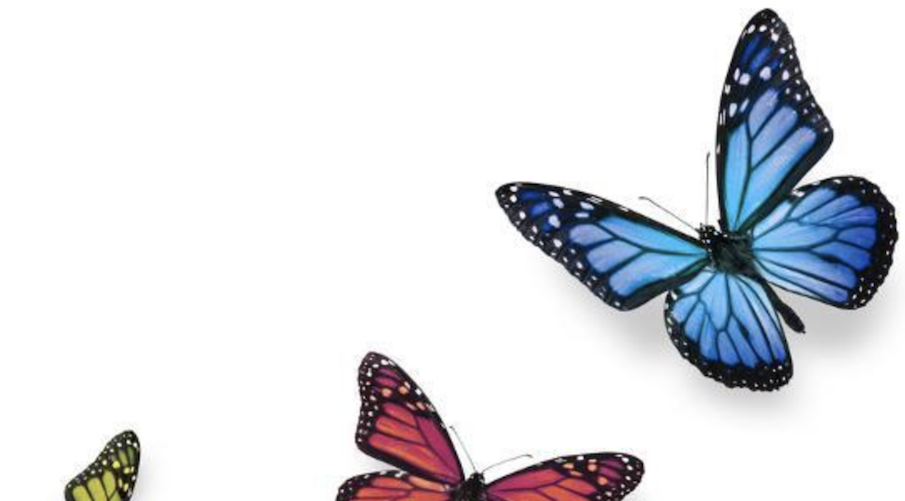Butterflies are one of the most unique and beautiful creatures that have fascinated humanity for thousands of years.
Their stunning colors separate them from almost all other insects and where many insects may invoke feelings of fear or disgust, butterflies usually fill people with wonder and amazement.
They are creatures of transformation, in psychology they represent resurrection. Butterflies can be found all over the world, but some types can only be found in specific locations.
You might commonly see a butterfly with white wings flying around your neighborhood, while one with turquoise wings may be a little rarer to witness.
Here are some awesome things you probably didn’t know about their color.
4 Cool Things about The Butterfly Wing Color:

1. Pigmented Color.
The first source of their unique color is the colored pigments that reflect light. These are colors which are flat colors that do not change.
The pigmented color is what we will see, regardless of how we look at the subject matter.
If we are to look at leaves on a tree, we will always see the green color.
This is because the chlorophyll, which will absorb all the light from wavelengths apart from the color green, is not absorbing this color.
2. Structural Color.
The second source is from the individual structure of the wings of the butterfly. This is known as the structural color.
The source of these colors is what is known as iridescence, which is a unique phenomenon where the colors of an object will change depending on the angle that you look at it.
With butterflies, their wings are actually complex layers of translucent membrane, which create the appearance of different colors when you look at them, especially in flight where their wings are in constant motion.
A perfect example of this phenomenon in action is when you see bubbles from soap. They are all a variety of colors that keep changing as they float around.
3. Purpose of the colors.
Butterflies don’t have such beautiful wings simply to look good, though this is in fact one thing that butterflies do look for in a mate.
There are much more important uses for their wing colors.
One of the most important in terms of the butterflies’ health is to put off being attacked, as the bright colors and patterns on their wings are interpreted by predators, such as birds, lizards and spiders, as tasting bad.
Their wing colors and patterns can also help them to camouflage from predators by blending in with the foliage or bark of a tree.
The top of the butterflies wings are where you will find the amazing array of colors and patterns.
The underside, which is visible when a butterfly is resting, is what they use for camouflage.
4. Symbolic meanings of butterfly colors.
There are a lot of people who look at the symbolic meanings behind the colors of butterfly wings.
Butterflies and moths are both insects that have appeared in artwork around the world and in many cases are related to immortality, the resurrection and the human soul.
Red butterflies are said to represent the souls. In olden times, red butterflies were often killed as many people believed them to be evil. If you dream about a red butterfly, it could be connected to your heart or blood pressure, as well as related to emotions such as anger or passion.
Black colored butterflies are believed to represent bad news, and omens of death. There are strong connections with death following the appearance of black butterflies if someone is ill. Dreaming of such butterflies also has negative beliefs with it being that you may find yourself trapped, or that you focus a lot of things such as evil and fear.
Butterflies with stunning blue wings are considered to represent good news. They are considered to be incredibly rare, and as such, they are considered to be the ultimate work of nature. If you ever see a blue butterfly, it is said that you will enjoy great fortune and luck in the future.
Butterflies really are an amazing creature. Their unique patterns and glorious colors are a source of inspiration for people all around the world.
They are an example of the magic and beauty of nature, and really are a natural piece of art.
They are highly symbolic, starting from the process of them being caterpillar and all the way to their resurrection, they represent transformation.
Their inclusion in artwork found in countries and culture everywhere is testament to their importance and what we believe they represent on a physical as well as a spiritual level.
